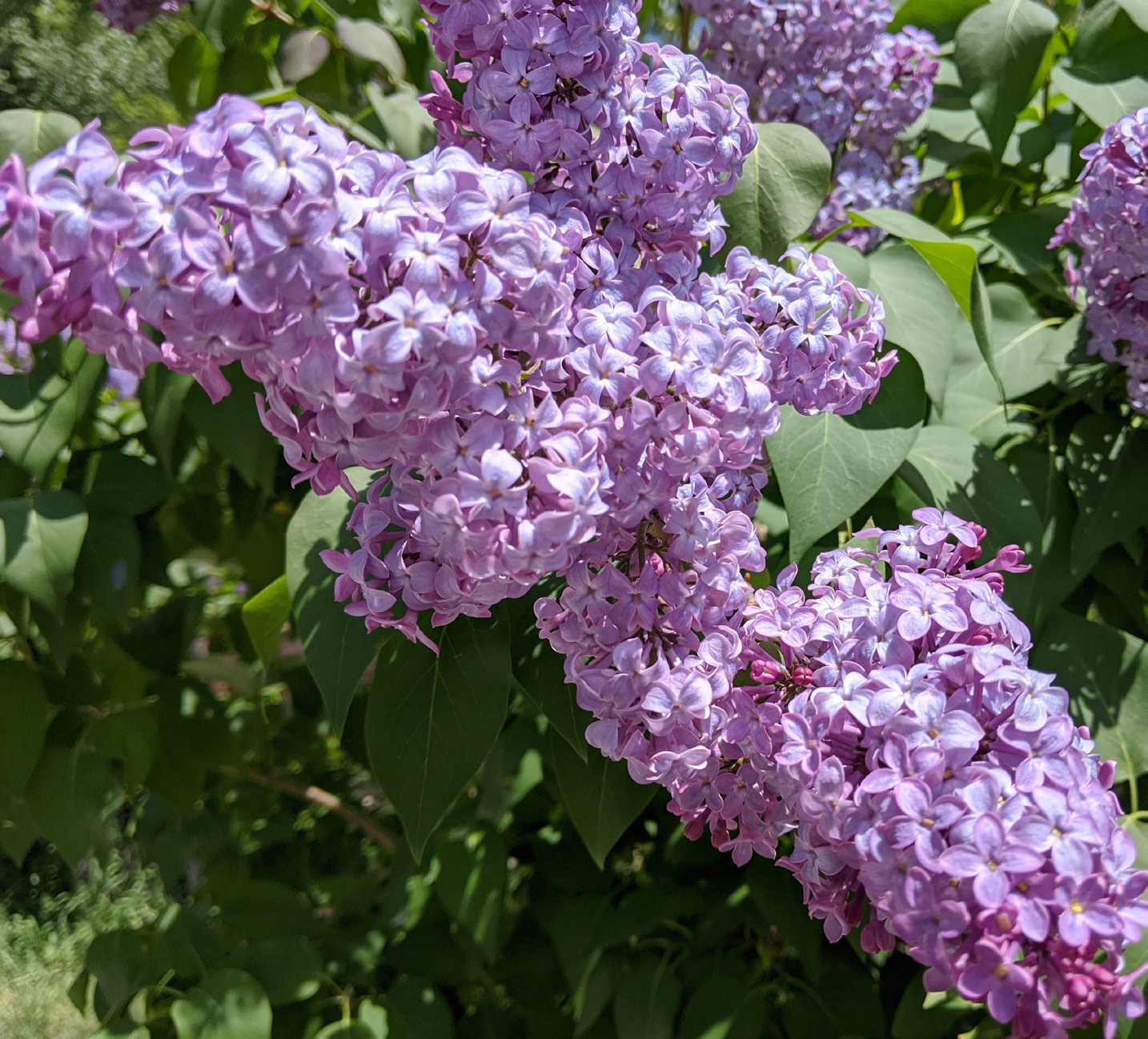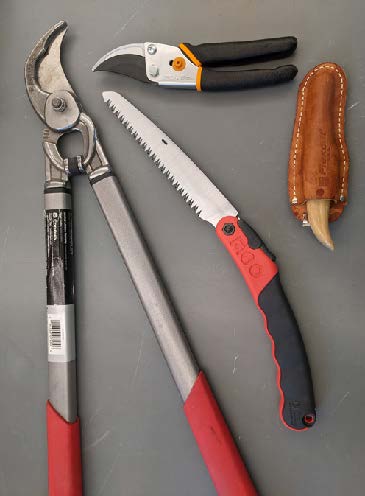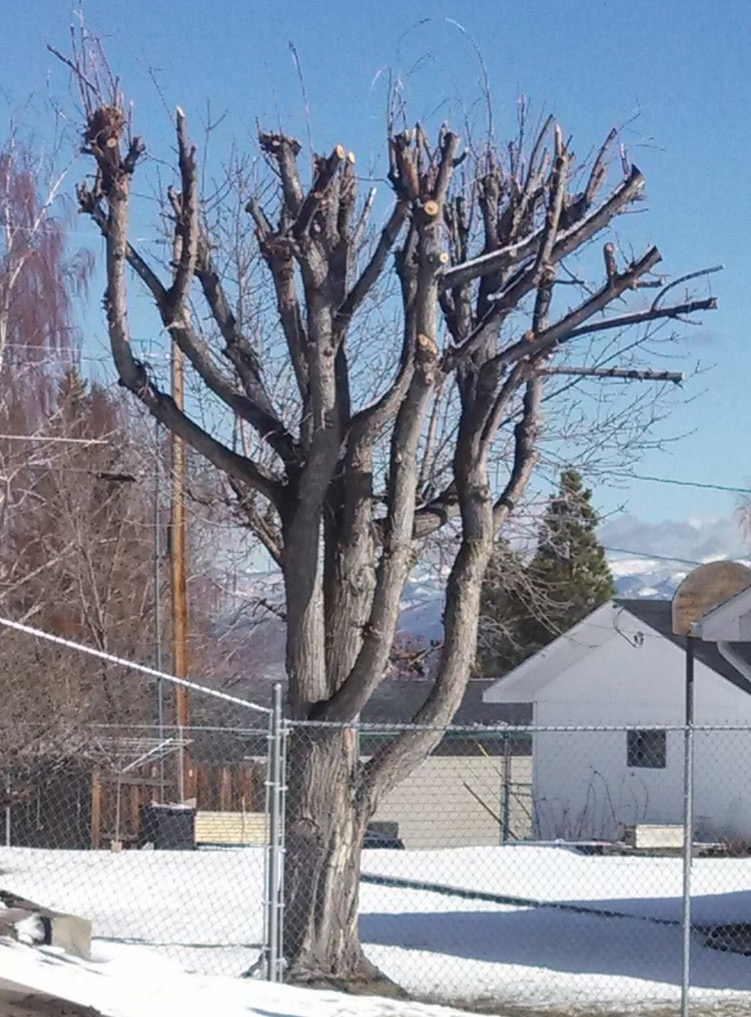The Basics of Pruning Trees and Shrubs
Why, when, and what to prune
It’s winter and for many, gardening may not be the first thing on their mind. That being said, if you are a tree-care professional or tree enthusiast of any kind, you probably know this is the time of year to think about the start of the upcoming gardening season. This is also the best time to prune most landscape trees and shrubs.
WHY PRUNE?
Pruning is done for a variety of reasons, including to maintain the plant’s health and vigor, to promote flowering or fruiting, to achieve a desired shape and structure, to correct issues including overcrowding and overgrowth, and to protect people and property.

Lilacs are an exception to dormant-season pruning.
Photo: Sarah Eilers, MSU Extension
WHEN TO PRUNE?
The best time of year for pruning most landscape trees and shrubs is during the dormant season (late winter to early spring). Dormant-season pruning is beneficial because it reduces the risk of pest and disease issues affecting the pruning cuts (which are wounds that can allow entry of disease-causing organisms). Dormant-season pruning also makes it easier to see the structure and shape of deciduous trees (without leaves obscuring the view), which allows better visualization of the desired outcome.
Exceptions to dormant-season pruning are early spring flowering shrubs (such as lilacs). These should be pruned immediately after flowering to still enjoy the flowers (which are formed on the previous year’s growth). Damaged, dead and diseased branches can be pruned at any time of year (and should be removed as soon as possible to promote plant health).
Late summer and fall pruning are not recommended because it encourages new growth, which is tender and susceptible to cold damage as the winter months approach. Extensive summer pruning is also discouraged because it can increase stress and result in heat and sunlight-related injuries to some trees and shrubs.
WHAT TO PRUNE?
When considering a pruning project, a good strategy is to follow this order of priorities:
1. Prune out any problematic sections first
- Dead, diseased, and damaged branches
- Crossing branches can create wounds by rubbing on other branches, which leaves an entry point for pathogens and pests.
- Co-dominant stems are two branches that are growing from the same union at the same rate. Co-dominant stems are usually weaker attachments that can result in structural issues.
- Downward and inward-growing branches are growing in the wrong direction and can compromise the structure and function of a healthy tree.
- Suckers and water sprouts are vertically growing branches from the base of the tree (suckers) or from large lateral branches (water sprouts) and can divert energy from the tree and compromise shape and structure.
- Branches with narrow (<45°) attachment angles are weaker and more likely to break, resulting in ripping bark, larger wounds, and greater damage to the tree.

Prune dead, diseased or damaged branches first.
Photo: Sarah Eilers, MSU Extension
2. Prune for desired results
- Choose the appropriate pruning cuts (heading cuts vs. thinning cuts) for the specific job and desired results. Heading cuts remove part of a shoot or branch to encourage growth from buds below the cut. Thinning cuts remove an entire shoot or branch up to the trunk or large lateral branch.
- Thin trees and shrubs with overcrowded branches by selecting to keep branches with the healthiest and most vigorous growth and desired growth direction.
- Maintain a healthy and vigorous natural shape of trees and shrubs by removing branches that compromise the desired shape and structure.
- For specialty pruning projects (including fruit tree training), consult the local MSU Extension office for detailed recommendations.
3. Prune regularly to maintain health, vigor, and function
- Pruning is most successful when addressed in a timely manner. Removing smaller shoots and branches is much easier and better for the overall health of the plant (because it reduces the size of the wounds, maintains the desired structure, and addresses issues before they become bigger problems).
- Don’t remove more than 1/3 (30%) of branches at a time. Larger pruning projects (such as rejuvenation pruning) can be performed over multiple years to reduce stress on trees and shrubs.
- Never leave a branch stub or stem; prune back to or just above the growing point so as not to leave the tree susceptible to insect or disease infestation.
USE THE CORRECT TOOLS FOR THE JOB

Hand pruning shears (aka pruners) can be used for branches between half an inch and one inch in diameter (or smaller). Branches between 1–1.5 inches in diameter should be pruned using lopping shears (similar to pruners, but with longer handles to allow more leverage).
Bypass loppers and pruners (where the blades cross each other, making a clean cut) are better than anvil loppers and pruners because the blunt edge of anvil tools can result in stress and damage to branches.
Branches larger than 1.5 inches in diameter should be pruned using a saw (such as a fixed blade or folding hand saw). When removing larger branches, use the three-cut method to reduce tearing damage to the bark.
Large branches can be extremely heavy and dangerous, and branches over four inches in diameter should only be tackled by someone who has the correct tools and experience for the job (such as a certified arborist).
OTHER IMPORTANT CONSIDERATIONS
FOR PRUNING
- Sanitize tools. Use a 70% alcohol solution or disinfectant
spray to sanitize tools between plants. If dealing with diseased plants, tools should be sanitized after each cut. - Don’t apply wound paints and dressings. Trees and shrubs will heal wounds (including pruning cuts) by compartmentalizing the damaged section and creating callus tissue to cover the exposed area. Wound paints and dressings can hinder this natural ability to heal wounds and can also act as a refuge for pests and diseases.
- Sharpen pruning tools regularly. Blunt tools result in less precise pruning cuts which can take longer to heal.
- Don’t top trees. Topping trees (which often involves removing large sections of the
canopy) can have many detrimental effects on trees, including stress from the removal
of large sections, rapidly growing
weak branches that are susceptible to failure and breakage, larger wounds with potential for pests, disease, and decay issues, and overall poor shape, structure, and appearance. - Only tackle projects you are comfortable with. For complicated pruning projects and more dangerous conditions (such as hazard trees, higher branches, and those requiring specialty tools), skilled and experienced professionals such as certified arborists should be consulted.

Topping trees can have many detrimental effects.
Photo: Sarah Eilers, MSU Extension
If you are like many gardeners who may be intimidated by the prospect of pruning, know that it is a skill that is best achieved through practice. Contrary to popular belief, pruning does not stop growth, instead, it encourages new growth around the areas that have been pruned. Don’t hesitate to get out there and tackle the pruning project, and continue to sharpen and grow your skills.
|
If you have additional questions about pruning, contact your local MSU Extension office. For more pruning information, check out these resources: |
Abiya (Abi) Saeed is the MSU Extension Horticulture Specialist.
